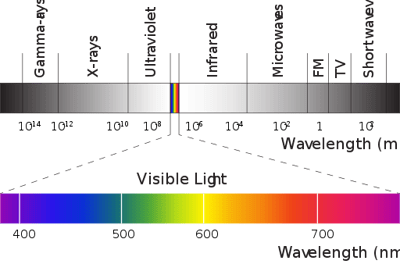
Let’s say you want to learn how to make purple food coloring or how to make purple paint. You’ll need to understand how to mix colors! But where do you begin? What two colors make purple?
To learn how to make purple, you need to have an understanding of the science behind color mixing. In this article, we’ll teach you everything you need to know about how to use colors to make purple. We’ll cover the following:
- A quick guide to how to make purple
- A scientific explanation for the question, “What is purple?”
- A thorough explanation of how to make more complex shades of purple
- Examples of different shades of purple and what colors you combine to create them
Now, let’s talk about how to make purple!
How To Make Purple: A Quick Primer
Mixing blue and red together makes purple. The amount of blue and red that you add to your mixture will determine the exact shade of purple you produce. More red will create a redder purple, and more blue will create a bluer purple.
Blue and red are essential to creating purple, but you can mix in other colors to create different shades of purple. Adding white, yellow, or gray to your mixture of blue and red will give you a lighter purple. Incorporating black into your blue and red mixture will give you a darker shade of purple.
In general, purple refers to any color with a hue that is between red and blue. But getting the perfect shade of purple is a little more complicated than simply mixing these two colors. This is where the science of color comes in! Understanding the science behind making purple will help you make purple all on your own.
We’ll cover the basics of the science behind making purple next!

What Is Purple? The Science Behind the Color
What two colors make purple? Mixing red and blue together makes purple, but getting the right shade of purple isn’t quite that simple.
To answer the question, “What colors make purple,” you need a basic understanding of color. Color comes from light, so we need to start by looking at how light works.
Understanding light can be complicated--I mean, that’s why we have physics. But luckily, the color-making geniuses at Crayola explain how light creates visible color like this:
When light shines on an object some colors bounce off the object and others are absorbed by it. Our eyes only see the colors that are bounced off or reflected.
The sun’s rays contain all the colors of the rainbow mixed together. This mixture is known as white light. When white light strikes a white crayon or marker barrel, it appears white to us because it absorbs no color and reflects all color equally. A black crayon or marker cap absorbs all colors equally and reflects none, so it looks black to us. While artists consider black a color, scientists do not because black is the absence of all color.
In simpler terms, objects have certain physical properties that cause them to absorb certain types of light, or electromagnetic waves. The light waves that aren’t absorbed are reflected, which creates the color you see with your eyes!
And what about black and white? An object will appear white when it reflects all colors. This is because white contains all wavelengths of light and is made of all colors of the rainbow. The light from the sun is an example of white light! Then there’s black. Black objects absorb all color because they reflect no light back.
Most of the time, an object will reflect some color. So when an object appears as green or red to you, it’s because of the wavelength of light that’s bouncing off of the object.
At this point, you’ve probably guessed that light comes in lots of different wavelengths. A wavelength is the distance between two crests of a wave of light. You can visualize how a wavelength of light behaves by thinking about how water hits the shore at the beach. Waves sometimes hit the shore low and far apart. At other times, waves come in higher and closer together. Now, if you wanted to measure the length of the waves at the beach, you’d start at the highest point, or crest, of one wave, then measure to the crest of the next wave. The distance from crest to crest is what we call the wavelength of the ocean on the beach.
Waves of light are a lot like waves of water--except light waves are a lot smaller and closer together. When light bounces off an object, our eyes measure the wavelengths and translate them into different colors.
The entire scope of possible wavelengths of light is called the “spectrum.” If you look below, you can see how the spectrum of light converts to the spectrum of color:
(MNDNF/Wikimedia)
The length of a wave of light is measured in nanometers (nm). Longer wavelengths translate to colors that appear “warmer,” and shorter wavelengths create colors that look “cooler.”
If you look at the image above again, you’ll also notice that only a very small portion of the spectrum of light is visible to our eyes. We’re only able to see the wavelengths between about 400 and 800 nanometers. That may seem like a lot, but the spectrum of light extends far beyond that range in either direction. There is a lot of light on the available spectrum that we can’t see!
The segment of the electromagnetic spectrum that humans can see without help from technology is called the “visible light spectrum.”
Red, a primary component of purple, is approximately 700 nanometers in wavelength. Red is one of the longer wavelengths that our eyes can see. The distance from crest to crest is only a little bit thicker than the membrane of a soap bubble.
But purple is also made of blue. Blue has wavelengths around 475 nanometers, making it one of the shortest wavelengths visible to our eyes.
So what colors make purple? Purple is a combination of red light and blue light. An object that we perceive as purple has a makeup that causes it to absorb all wavelengths of light except those that fall around 700 nanometers and 475 nanometers in length. The object reflects those exact wavelengths mixed together, which gives the impression that the object is purple.
PSA: Purple and Violet Aren’t the Same
Purple is sometimes confused with violet. But purple and violet are different colors. Here is the difference between purple and violet: violet refers to the color of a single wavelength, but purple comes from a combination of wavelengths.
Violet is considered a spectral color. Like blue and red, violet is created through a single wavelength of light which falls on the visible spectrum between 380 and 450 nanometers. Purple is not a spectral color. Instead, purple becomes visible to our eyes when the wavelengths of the spectral colors red and blue are mixed together and reflected by an object.
In the painter’s color wheel, purple and violet are placed next to each other between red and blue. But purple is closer to red on the color wheel, and violet is closer to blue.

Mixing purple might feel like magic--but it's not! You can make the perfect shade of purple by using additive or subtractive mixing techniques.
So How Do You Make Purple?
When objects that reflect light in different ways get mixed together, the ways that they reflect light are mixed together too. This is how more complex colors--like purple!--are created through light waves.
The two main methods for creating color by mixing light are called additive mixing and subtractive mixing.
How To Make Purple: Additive Mixing
Additive color mixing is specifically used for mixing light waves. Additive color mixing is used to create colors for televisions, computer monitors, and disco lights, for instance. Basically, additive mixing creates colors by layering different wavelengths of light onto each other, then combining them with a white object.
So what two colors make purple through additive mixing? In additive mixing, you can make purple by combining the wavelengths of blue light and red light in different proportions. Depending on the combination, you can get a pale purple like lavender...or a bold, dark purple like merlot!
How To Make Purple: Subtractive Mixing
Subtractive mixing creates color by removing wavelengths of visible light by using physical elements like paints, pigments, or dyes. This process is called subtractive mixing because some wavelengths of light are absorbed instead of being reflected back as colored pigments are mixed together . When it comes to how to make purple paint, for instance, you’d want to use subtractive mixing.
So what two colors make purple in subtractive mixing? Red and blue! Mixing red and blue paint or dye actually mixes different wavelengths of light. Red paint reflects one wavelength, and blue paint reflects another wavelength. When combined, the compounds in the mixture reflect the red and blue wavelengths back in a new way. That combo of reflected light is what we see as purple!
How To Make Purple: Tints and Shades
Purple can also be created by making tints and shades. But what are tints and shades?
A tint is made when you add white to another color. Pink is an example of a tint because it is made by combining red with white. So by mixing purple with white, you can create a tint of purple!
A shade is created by combining black with another color. So when you add black to purple, you get a shade of purple. The brightness or intensity of a color is also determined by how much black or white is added to it. The proportion of black or white to color is called “saturation.” A saturated color has little black or white added to it, whereas a desaturated color is combined with a lot of black or white.
The process of adding black and white to a color creates dimension, transforming the color wheel into a color sphere that looks something like this:
What color does red and blue make when you add black or white? Adding black or white to a mixture of blue and red allows you to create many different types of purple. Tints of purple are created by mixing red, blue, and white. These tints will be lighter colors, like orchid. Shades of purple are made by mixing red, blue, and black. Shades will be darker and deeper colors, like indigo.
If you’re working on an art project and need to learn how to make purple paint colors, experimenting with tints and shades is a surefire way to improve your color mixing technique!
What Other Colors Can You Make With Purple?
What colors make purple? It turns out you can make many different shades of purple. The shades of purple you’ll get depend on the colors you start with and the way that you mix them!
Mixing blue and red with white, black, or gray is the way to create significantly different shades of purple. To help you mix the perfect color purple, take a look at our sample swatches below!
Predominantly Red Tints of Purple
What color does red and blue make? Well, when you add more red than blue, you get predominantly red tints of purple. You can also add white or black to reddish shades of purple to get a less saturated or darker red-purple.
Here are seven predominantly red tints of purple:
Magenta

Red Violet

Orchid

Heliotrope

Fuchsia

Merlot

Predominantly Blue Tints of Purple
What two colors make purple? Blue and red make purple, but you can dial up the amount of blue to achieve bluer tints of purple. Adding less red can also create a predominantly blue tint of purple.
What color does blue and purple make? Here are five colors you get when you amp up the amount of blue in purple:
Periwinkle

Lavender

Blue-Violet

Indigo

Amethyst

Lilac

Purple With Gray Undertones
When it comes to what colors to mix to make purple, consider adding gray! But what color does red and blue make when you add gray? Blue and red mixed with different amounts of gray can produce a purple color with gray undertones.
Here are some shades of purple that have a grayish tint:
Mauve

French Lilac

Lavender Gray

3 Tips for Making Purple
Now that you’ve learned the science behind what colors make purple, are you ready to think about creating your own shade of purple?
To get started, you’ll need to mix blue and red, then possibly add in another color like white, black, or gray. When you’ve chosen colors to make purple, you’re ready to start making purple! To help you create the purple color you want, check out our three top tips below.
Tip 1: Choose a Hue
Hue refers to pure color. When we talk about a “hue,” we’re referring to the full saturation of a color or mixture of colors, with no white or black added in. The dominant wavelength in a color will create its hue.
So blue and red are the dominant wavelengths that combine to create purple. This means that the shade of purple you’ll end up with totally depends on the red and blue colors you start out with. If you want a warmer shade of purple, use a warmer shade of red as your base. Warm reds have orange or yellow undertones. If you want a cooler purple, start with a cooler shade of blue.
Tip 2: Consider Darkness and Light
Value refers to the lightness or darkness of a color and indicates how much light is reflected. Darker values will have black added and are called shades. Lighter values will have white added and are called tints.
When it comes to purple, adding in either white or black to a mixture of red and blue will adjust the value. If you’re going for a lighter purple, like periwinkle, add more white. If you want a darker purple, like deep violet, add more black.
Tip 3: Adjust the Saturation
“Saturation” refers to the amount of color in a hue relative to the amount of white or black. The more white or black added to a color, the less intense it will be. So a purple color like mauve isn’t very saturated because there’s a higher proportion of white to color.
If you want a brighter, more intense purple, don’t add as much white or black! A color like heliotrope or royal purple will have a higher saturation. This is because there’s not as much white or black added.

What’s Next?
Did you know that you can major in art in college? Most universities offer either an art major or minor that you can pursue. Here’s everything you need to know about getting into college as an artist!
If you’re serious about becoming an artist, you should consider going to a top art school. Here are the 10 best art schools in the United States.
Having said that, many artists benefit from international experience. One way to do this is by studying abroad in college. This article explains everything you need to know about studying abroad, including how to apply for study abroad scholarships.











